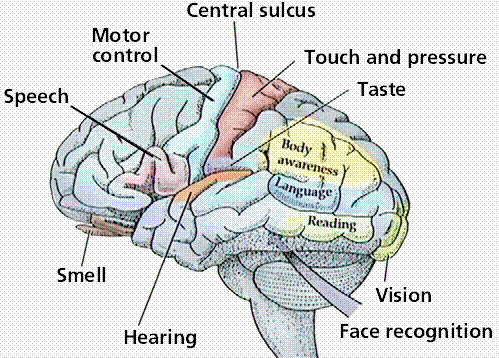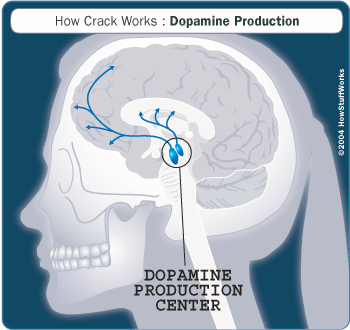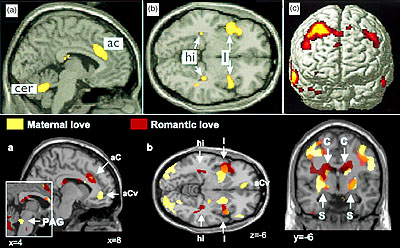Sense of Taste
The taste bud also referred to as the receptors of taste is mainly found on the tongue as well as the upper side of the mouth close to the pharynx. The basic tastes are bitter, sour, sweet and salty. In line with Crooks and Baur, the sensitivity to amino acids causes a different sensation called “umami” (2010).
The nerves below the taste glands transfer sensations to the brain, therefore the functioning of the sense of taste correlates to that of smell. Greater number of taste buds enhance better tastes since it increases sensitivity, for instance, women have more taste glands that men and are thus more sensitive to taste and smell than men (Crooks and Baur, 2010).
The lining of smell receptors in the nose cavity also has a link to the olfactory nerve that transmits sensations to the brain. The structure of the nose is special and according to Kar and Kar, the structure makes the organ to be termed “vomeronasal” due to suspicious of influencing the reproductive system (2005). Human nose is thus the main organ that determines taste and smell.
Brain’s Chemical Reactions to Taste and Smell
The body’s natural lubrication and smell of sexual fluids determines attraction as well as partiality to the sexual partner. These are body chemical substances that the sexual partner either perceive or imagine through the smell or taste. The cavity is made of sensitive nerve endings that receive and transmit the pleasurable stimuli to the brain.
Origin and Existence of Sexual Stimuli
Most sexual stimuli originate from central nervous system but the most fascinating factors involve how the brain is able to organize the sexual behaviours. Taste is one of the main factors that influence sexual stimulation. Both men and women experience stimulation very differently due to the differences on the concentration of taste buds.
The differences are both psychological and physical as more discoveries emerge in the haunt for understanding the causes of sexual dysfunctions. The studies are providing chances of exploring and discovering how various components of sexual arousal can occur. One of the main influences of sexual arousal is taste, which as discussed above has a very close link to smell. The diagram below shows various parts of the brain and the responses to stimuli.

Taste and smell initiates the mediation of the thoughts, emotions, and fantasies required for arousal. A smell can also trigger the memory of an exciting fantasy. According to Kar and Kar, the limbic system, hypothalamus is a predominant part of the human brain that plays a vital role in sexual arousal (2005). There are neurotransmitters that receive stimuli from various sense organs such as the nose and tongue, which have high influences on sexual responses as well as arousal.
Taste as a Facilitator of Sexual Arousal
Dopamine (a “catecholamine neurotransmitter”) is the main facilitator of sexual arousal in both men and women but serotonin (a compound in the brain and other body organs that acts as a neurotransmitter) provides the restrain from arousal (Kar and Kar, 2005).
The diagram shown below indicates the position of dopamine in the brain. For this reasons, although the sense of touch seems to dominate majority of the stimulation among other senses, the taste and smell elicits one of the main erogenous sensory region due to high concentration of nerve endings.

People respond and react uniquely to stimulation of taste. They also respond in accordance with sexual experiences and the significance of the erotic stimulus. However, sexual arousal through natural smell and taste faces various challenges due to the cultural sensitivity to matters concerning health or personal hygiene.
The senses of smell and taste are nevertheless major contributors of human responses. Scientifically feelings can travel from the sensual organs to the brain that sends the information to the sexual organs thus eliciting sexual responses. The diagram below shows the possible pattern for the romantic and maternal love as influenced by both taste and smell as indicated by Crooks and Baur, (2010).

“Comprehensive Textbook of Sexual Medicine” Thesis Statement
This book mainly focuses on the brain in relation to sexual arousal. The writers mediate through the power of thoughts, memories, emotions and fantasies in influencing arousal. According to the writing, sexual arousal depends on power of thoughts, memories, emotions, and fantasies.
Main ideas
- One of the main ideas presented by the authors involves the processes of determining and ranking the senses of sexual arousal. According to the writing, the sense of touch dominates other senses. This is for the reason that there are various points of the skin that presents highly responsive tactical pleasing points. These areas such as palms or lips have high concentration of nerve endings and therefore the writer compares the zones to other erogenous areas of the body that have little or no erotic significance during sexual activities. Furthermore, the writers’ positions the sense of sight second from touch, since it is also a provision of stimulus that most people find to be sexual fascinating. The writers also compare the visual responses of men versus women.
- Another key idea presented by the book involves the sense of smell and taste and the role this plays in influencing sexual arousal. The main predicament raised by the writers in this case involves the negative consideration of these stimuli during sexual activities due to the traditional and cultural concerns on issues relating to hygiene. Other concerns raised involve comparing the human beings to other animals, majority of which have a strong link of sexual odours to the reproduction.
- The writers discuss the role played by hormones in determining sexual behaviours. At this point, there is deeper analysis and comparison between the male and female hormones.
- The writers addresses the issue of sexual responses and provides a significant analysis of responses, for instance through analysis of reaction of persons in different age groups.
Evidence in Support of Main Ideas
- On sexual arousal, the writers indicate that various stimuli in the brain influence arousal and response for instance the dopamine and serotonin.
- The writers are also keen to note that majority of the evidence presented on issues concerning influence of taste and smell on sexual arousal is still tentative particularly the concern that the body produces pheromones that double as sexual attractants.
- The writers also indicate how most people are quick to indicate and emphasize on various fundamental differences especially sexual responses between males and females.
- There is enough evidence on the issue of sexual arousal differences that are linkable to different orientations particularly the age differences.
“Our Sexuality” Thesis Statement
Neurotransmitters are the main determinants of the formation of sexual patterns, caused by various simulative sense of taste.
Main Ideas
- The writers emphasize the functions of the brain one being the important role in human sexual arousal due to the psychological impact of smell as well as taste.
- The emphasis also focuses on the limbic system and hypothalamus part of the brain as predominant structures responsible for sexual arousals.
- The text has highlighted the neurotransmitters that receive stimuli from various sense organs and the influences the neurotransmitters have on sexual responses as well as arousal.
- The text has a clear distinction between Dopamine and Serotonin as forms of neurotransmitter, which provides humans with a control over arousal.
Evidence in Support of Main Ideas
- The sexual functioning requires coordination of activities in various body organs such as negotiation of the sensory system.
- Change of the cortex, adjustment of activities in the endocrine as well as the limbic system, and incentive of the nervous system are the main sexual arousal coordinating aspects.
- The book presents the anatomical changes of neurotransmitters.
- According to the writers, Dopamine is a “catecholamine neurotransmitter” that facilitates human sexual arousal while serotonin is a compound in the brain and other body organs that acts as a neurotransmitter to provide human control over sexual arousal.
References
Crooks, R, and Baur, K. (2010). Our Sexuality. California, CA: Cengage Learning.
Kar, N, and Kar, G. C. (2005). Comprehensive Textbook of Sexual Medicine. New Delhi, India: Jaypee Brothers Publishers.